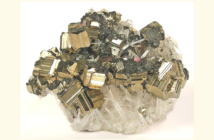Because of the environmental concerns and scarcity of fossil fuels, we’re convinced that the green energy industry will take complete control over our energy needs in the coming 20-40 years. This transformation has increased the demand for rechargeable batteries manifold. However, existing lithium ion battery systems (utilizing lithium manganese oxide and lithium cobalt oxide) are still facing issues like safety concerns, short life cycles and low discharge rate.

As an attempt to solve the above issues, Dr. John Goodenough with his team at The University of Texas in 1996 employed LiFePO4 as the cathode in a regular Lithium ion battery. This lithium battery is known as the Lithium Iron Phosphate Battery, Lithium Ferrophosphate Battery (LFP) or LiFePO.
The cathode material used is exceptionally steady because of the covalent bonding between P-O.
Advantages:
a) Quick charging
b) Safer performance and large overcharge tolerance
c) Self balance
d) Simplified battery management system and battery charger
e) Four times higher energy density than a Lead-acid battery
f) Runs better at high temperature with 10% enhanced capacity
g) Longer life cycle of up to 2000 cycles
Application:
a) Transportation: electric cars and bikes
b) Batteries utilized in electronic cigarettes
c) Security light systems and Solar garden
d) Flash lights or torches
e) In projects like One Laptop per Child
Another interesting feature of Lifepo4 technology is its adaptability, in terms of battery design and battery application. For example: this battery could be used in wound prismatic, polymer battery and wound cylindrical construction types so as to become fit for small sized applications.
Related Articles:



